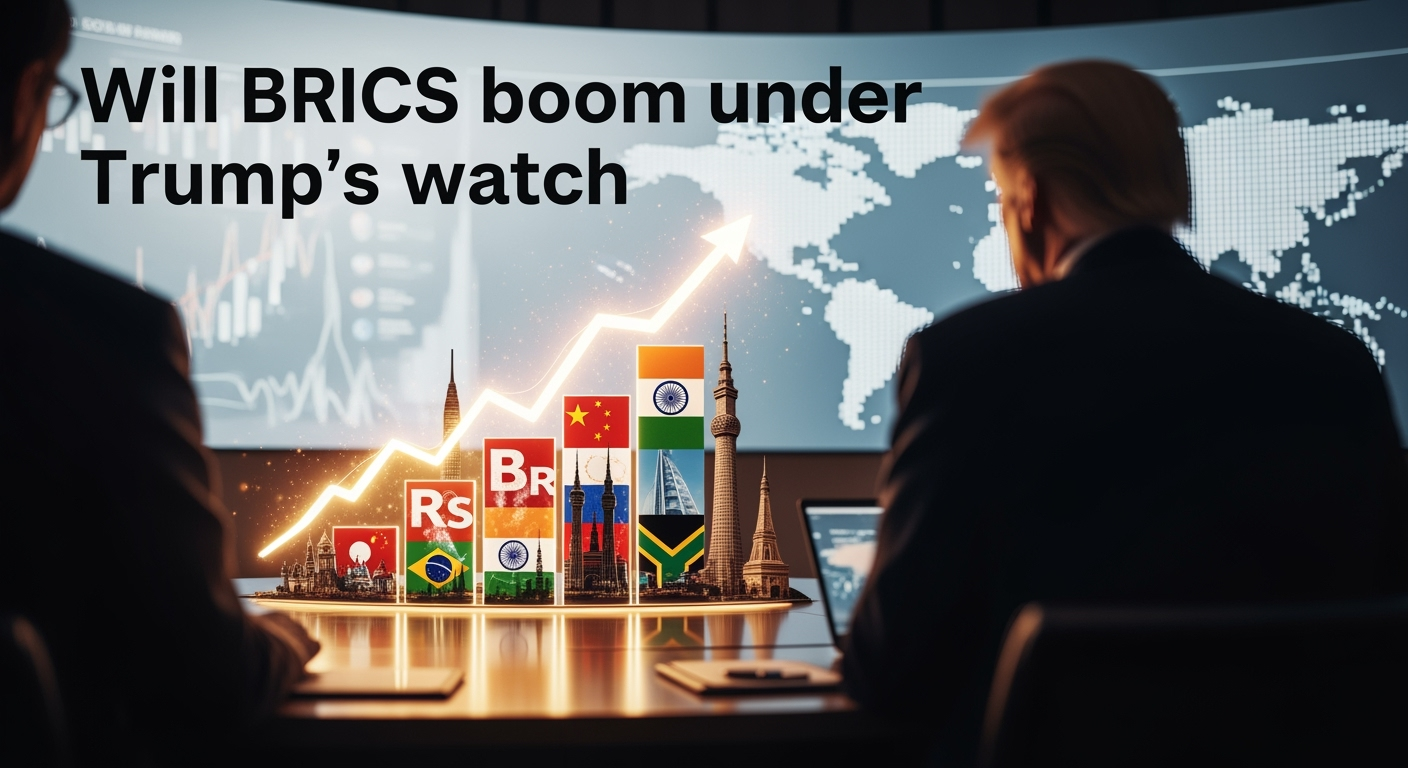Related Articles

China Intensifies Economic Pressure on U.S. Amid Escalating Trade War




The burgeoning BRICS alliance, having recently expanded its membership and global ambitions, now braces for a turbulent period marked by the return of a protectionist "America First" doctrine under a second Donald Trump administration. This evolving dynamic signals an intensified period of geopolitical and economic contestation, as the non-Western bloc seeks to redefine the international financial landscape amidst renewed U.S. pressure.
Since its inception, BRICS has sought to amplify the influence of the Global South and reform multilateral institutions. The coalition, initially comprising Brazil, Russia, India, and China, expanded to include South Africa in 2010. In a significant move in 2024 and 2025, the bloc welcomed six new full members: Egypt, Ethiopia, Iran, the United Arab Emirates, and Indonesia, bringing its total to eleven nations. This expansion substantially broadens the group's demographic and economic footprint, now representing approximately 49.5% of the global population and 40% of the world's Gross Domestic Product (GDP). The core objectives of BRICS include fostering robust economic, political, and social cooperation among its members, alongside increasing their collective influence in international governance. Key initiatives, such as the New Development Bank (NDB), aim to provide alternative financing mechanisms, while extensive discussions around de-dollarization efforts underscore a concerted push to reduce reliance on the U.S. dollar in global trade and finance.
A second Trump presidency is projected to double down on the "America First" foreign policy approach that characterized his first term, prioritizing domestic interests, imposing tariffs, and often eschewing multilateral agreements. This includes a renewed focus on protectionist trade measures and a confrontational stance toward countries perceived as economic rivals. Former President Trump has explicitly threatened to impose severe tariffs, including a 100% tariff, on BRICS nations if they pursue de-dollarization strategies or attempt to establish a new common currency. Such threats are not merely rhetoric; his administration has already applied tariffs to key BRICS members, such as a 50% tariff on Indian and Brazilian exports and a 30% hike on South African goods, with China facing even higher rates. Trump's administration views BRICS' moves towards financial independence as a direct challenge to the U.S. dollar's global dominance, a "red line" that invites a strong punitive response.
Paradoxically, Trump's aggressive protectionist policies and tariff threats appear to be inadvertently pushing BRICS members closer together, solidifying their resolve to strengthen economic cooperation and seek alternatives to the U.S.-dominated financial system. Russia and China, in particular, have been vocal proponents of de-dollarization, actively engaging in local currency trade agreements and exploring alternative payment platforms to circumvent the U.S. dollar. The New Development Bank also aims to expand local currency financing, providing a tangible alternative to Western financial institutions.
However, the expanding BRICS bloc is not without its internal complexities and challenges. The increased membership, while boosting collective strength, also complicates consensus-building due to a wider array of national interests and priorities. Countries like India have maintained a more balanced foreign policy, engaging with both Western nations and BRICS, and expressing skepticism about the immediate feasibility of a common BRICS currency due to the inherent complexities of aligning diverse fiscal and monetary policies. Similarly, Brazil, holding the BRICS presidency in 2025, aims to pursue a multi-aligned strategy and has shown some reluctance to allow the group to become overtly anti-Western, reflecting its own ongoing ties with the United States. These internal fissures and the enduring strength of the U.S. dollar, backed by its macroeconomic stability and deep financial markets, present significant hurdles to BRICS' ambitions for a fully independent monetary system.
The anticipated trade policies of the second Trump administration, including the potential 100% tariffs on BRICS nations, are projected to have profound economic consequences globally. Economic models suggest that such tariffs would lead to slower GDP growth and higher inflation not only for the targeted BRICS economies, with China being the most impacted due to its exposure to the U.S. market, but also for the United States itself. Analysts indicate that the U.S. GDP could be significantly lower, and overall price levels higher, by the end of a second Trump term under such a scenario. This protectionist approach risks accelerating global economic fragmentation, disrupting supply chains, and alienating key trading partners, potentially triggering retaliatory measures.
The geopolitical landscape under a re-elected Trump administration is expected to be marked by intensified economic and geopolitical competition. While Trump's policies might be intended to contain BRICS' rising influence, they could inadvertently serve as a catalyst for the bloc to deepen its economic and political integration, further bolstering its push for a multipolar world order less reliant on Western institutions. The coming years will likely determine whether these tensions fundamentally shift the global financial architecture or merely reinforce existing divisions in an increasingly fragmented world economy. The BRICS group, in its expanded form, will continue to play a pivotal role in shaping this evolving international arena, balancing its ambitions for greater autonomy with the practical challenges posed by a recalibrated U.S. foreign policy.